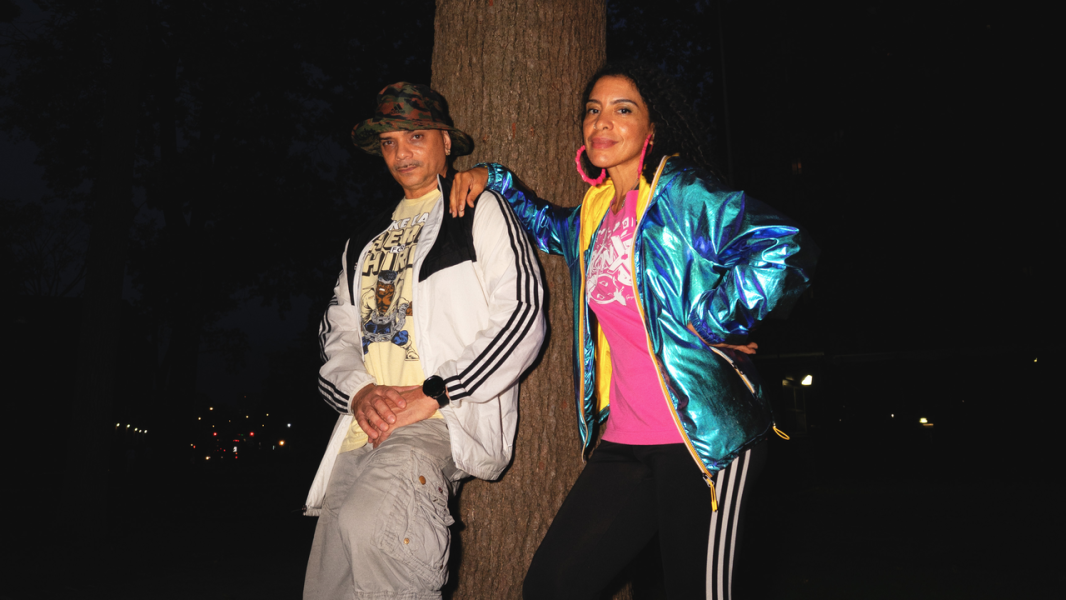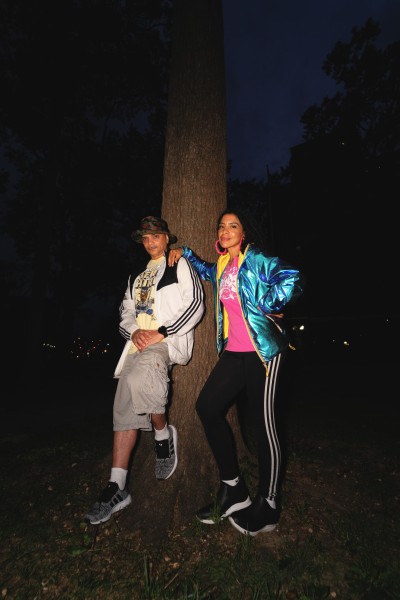
Save this storySave this storySave this storySave this story
Michael Schulman
Staff writer
You’re reading the Goings On newsletter, a guide to what we’re watching, listening to, and doing this week. Sign up to receive it in your in-box.
Is it just me, or has this Oscar season lasted five years? Maybe it’s because the Barbenheimer phenomenon has been with us since the summer. Or maybe we’ve just heard one too many times that Bradley Cooper spent half a decade learning how to conduct for “Maestro.” Whether you are a casual observer or an Oscar completist who is now cramming in a few more animated shorts, it all ends Sunday, with the ninety-sixth Academy Awards. Much is already known, or widely assumed: we’re likely to hear the word “Oppenheimer” several times, Da’Vine Joy Randolph (“The Holdovers”) is a shoo-in for Best Supporting Actress, and Jimmy Kimmel will be back to poke fun at Hollywood and move things along. But there are unknowns, too. Here are my top questions going into the big night.
Can anything upset “Oppenheimer”?
This year’s front-runner has it all: it’s a historical epic about a weighty subject made with technical flair and a starry cast. It’s in position to sweep Best Picture, Best Director (Christopher Nolan), Best Supporting Actor (Robert Downey, Jr.), a slew of design categories, and, most likely, unless Paul Giamatti sneaks in, Best Actor (Cillian Murphy). It’s hard to imagine which other Best Picture nominee could snatch the top prize. There’s love for “Anatomy of a Fall,” “The Holdovers,” “Poor Things,” and “The Zone of Interest,” but I’m not sure if Academy voters would line up behind any one of them in large enough numbers. A win for “Killers of the Flower Moon,” “Maestro,” “American Fiction,” or “Past Lives” feels even less likely—which leaves one last contender, and leads to my next question. . . .

“Oppenheimer.”
Photograph courtesy Universal Pictures
What is “Barbie” ’s Oscar fate?
The biggest hit of the year was passed over in the Best Director (Greta Gerwig) and Best Actress (Margot Robbie) contests, but it still got eight nominations. Will those much discussed snubs give it a boost in other categories? Best Picture would be a surprise, but a plausible one. The film’s supporting actors, Ryan Gosling and America Ferrera, look destined to lose. In Production Design and Costume Design, “Barbie” has a shot, but it’s up against another extravagantly stylized film, “Poor Things.” Its most likely win is for Best Original Song, where it’s nominated twice but has the edge with Billie Eilish and Finneas O’Connell’s “What Was I Made For?” The head-scratcher is Best Adapted Screenplay, by Gerwig and Noah Baumbach. This is where the Academy could show its love for Gerwig, but the competition is formidable—especially Cord Jefferson’s “American Fiction,” a movie about writing.
Who will win Best Actress?
The common wisdom is that it’s a two-woman race between Emma Stone (“Poor Things”) and Lily Gladstone (“Killers of the Flower Moon”). Stone has already won in this category, for “La La Land,” but her performance in “Poor Things” is fearless. “Killers” wouldn’t work without Gladstone’s poise and subtlety, and she has the momentum of being a relative newcomer whose win, as a Native American woman, would be a milestone. And then there’s Sandra Hüller, who delivers an undeniable performance in “Anatomy of a Fall.” With support from the Academy’s international members, could she be a dark horse?
Will Barbenheimer boost the ratings?
The viewership for the Oscars has been way down in the pandemic years, though it’s been creeping up since the 2021 telecast, which hit a historic low of 10.4 million. That was the year of “Nomadland,” a small, tough film about a woman who lives in a van. The highest-rated Oscars was in 1998—the year of “Titanic”—which drew more than fifty-five million viewers. With two gigantic blockbusters in the mix, will this year’s awards inch back over the twenty-million mark for the first time since 2020? The Academy sure hopes so.
Will something absolutely crazy happen?
I’ve been to the Oscars in person five times. The first was the year of the Best Picture-envelope mishap with “Moonlight” and “La La Land,” and the fourth was the year of the Slap. So what insane thing is going to happen this year? Will the set catch on fire? Will Sandra Hüller push Bradley Cooper out a window? Whatever it is, I’ll be up in the balcony, taking notes.
Spotlight

Photograph by Taranita CostalesDance
Around 2009, Kwikstep and Rokafella, a married team of veteran hip-hop evangelists, were noticing that dancers like them were becoming less and less welcome in bars and clubs. So they started hosting Behind the Groove, a semi-regular dance party for freestyling. The idea has been to promote social exchange across many forms—popping, breaking, house, waacking, hustle, and yet-to-be-named variants—without the heat of competition. But the event tends to attract participants with top skills and powers of invention who can’t help but make the temperature rise. On March 18, the party comes to the spiral-ramped rotunda of the Guggenheim Museum, courtesy of “Works & Process.” Ticket holders can watch in wonder or enter the circle and flash some moves.—Brian Seibert

About Town
Art
To appreciate AARON, an early artificial-intelligence program whose drawings and paintings are the subject of the exhibition “Harold Cohen: AARON,” you first might want to accept that it never made good art—images of flowers, tentacular hands, and sour little faces, but never good art. Think of it instead as a Rube Goldberg machine, reimagining doodles as dense jumbles of steps and if-then rules. The humbler the output, the more comically intricate, even poignant, the processes seem. The most arresting pieces on display may be diagrams from the notebooks of AARON’s creator, the artist and programmer Harold Cohen, which suggest a frazzled, almost fatherly delight in teaching a machine what most children already know.—Jackson Arn (Whitney Museum; through May 19.)
Off Broadway
“The Ally,” a new play by Itamar Moses, directed by Lila Neugebauer, foregrounds a well-intentioned Jewish Israeli American writing professor, Asaf (Josh Radnor), who’s asked to sign a wide-ranging social-justice petition by Baron (Elijah Jones), a Black student whose cousin was shot to death by police. Though uncomfortable with language condemning Israel’s “apartheid” and “genocide” of Palestinians, Asaf agrees. Anyone following the recent real-life upheavals on college campuses can guess what ensues. Asaf is accused of complicity in antisemitism by a Jewish student; then, after voicing concerns about anti-Israel sentiment to Baron and others allied with him—who say that American racism and Palestinian oppression are related—Asaf is accused of insulting both Arab and Black people. Moses’s writing, like Radnor’s and Jones’s performances, is powerfully empathetic, but audience members, however well-intentioned, may fatigue amid all the speechifying.—Dan Stahl (Public Theatre; through March 24.)
Opera

Lise Davidsen, as Leonora.
Photograph by Karen Almond / Courtesy Met Opera
In Verdi’s magnificently ungainly “La Forza del Destino” (“The Force of Destiny”), three main characters who are bound by a murder in their youth keep running into one another, despite efforts to remain apart. The coincidences can be comical, but the music is colossal, expressing not only fatefulness but trauma. Mariusz Treliński’s new modern-dress production for the Met moves uneasily between reality and suggestion before finding lucidity. In Act IV, Leonora (the extravagantly endowed soprano Lise Davidsen, through March 16), Don Alvaro (the stentorian Brian Jagde), and Don Carlo (the gripping Igor Golovatenko) converge at an abandoned, bombed-out subway station. Having reached the figurative end of the line, they assume a tragic grandeur, abetted by the conductor Yannick Nézet-Séguin, as they collide one last time.—Oussama Zahr (Metropolitan Opera House; select dates through March 29.)
Dance
The dance selections of the annual Flamenco Festival start, at City Center, with Ballet Nacional de España’s “Invocación,” in which a huge cast of thirty-eight dancers sets flamenco within a broader context of Spanish dance. In a solo show, “La Leona,” the petite and precise Olga Pericet celebrates the guitar while toying with surrealist props and costumes. And, for this year’s Gala Flamenca, the lineup includes Manuel Liñán—who convincingly commands traditionally female attire such as the long-tailed bata de cola dress—and the self-taught young firebrand El Yiyo.—Brian Seibert (March 8-17.)
Hip-Hop

Photograph by Paul Morigi / Getty
In 2018, the Philly rapper Tierra Whack forced her way into the frame with the forward-thinking début “Whack World,” a whimsical audiovisual experience that traversed not just varied avant-pop soundscapes but the folds of her brain. Inside the album’s minute-long songs, Whack introduced a fun-loving and audacious persona capable of tongue-twisting lyricism, bubbly displays of melody, and bite-size storytelling, all with the theatricality and presence of a character actor. Each song had its own distinct music video, and they all link together to make a short film. She’s issued smaller projects since, but this month she returns with a long-awaited follow-up, “World Wide Whack,” poised to reassert herself as a polymath who doesn’t take herself too seriously.—Sheldon Pearce (Webster Hall; March 15.)
Movies
Richard Linklater has often fictionalized his boyhood in Huntsville, Texas, in such films as “Dazed and Confused” and, of course, “Boyhood”; now he scrutinizes it in the documentary “Hometown Prison,” one of his most passionate and personal works. The town is centered on a prison complex in which the state of Texas carries out executions. Many Huntsville residents work in the prison, and many of the town’s daily activities take place in plain view of its walls. In the documentary (one of three in the HBO series “God Save Texas,” based on the titular book by Lawrence Wright, of this magazine), Linklater probes his own deep-rooted and troubling connections to the prison in poignant interviews—including with people once incarcerated there, corrections officers, and his own longtime friends, who help him break burdensome silences on camera.—Richard Brody (Streaming on Max.)

Pick Three
The staff writer Rachel Syme shares current obsessions.
1. This past year, I have made an active effort to disentangle myself from the vice grip of social media. I no longer use Twitter (excuse me, X), and I’m weaning myself off of Instagram. Still, one social network continues to bring me joy: Letterboxd. (I’m @rachsyme over there!) I was late to join the site, where people rate and review films, revealing their taste, their wit, and their curatorial skills. But now I love browsing strangers’ reviews and reading the idiosyncratic lists that people put together. A recent favorite: Zackawhat’s “Dude is havin a rough night.” (The films include “After Hours,” “Eraserhead,” and “Die Hard.”)

Illustration by Rachel Levit Ruiz
2. On March 22, Katie Crutchfield, the singer-songwriter who performs as Waxahatchee, releases “Tigers Blood.” I can’t stop listening to the album’s lead single, “Right Back to It,” a dulcet, banjo-backed ditty recorded with the singer and guitarist MJ Lenderman, which leans heavily into country twang. Consider your summer of glamorous yee-haw vibes officially kicked off.
3. I highly recommend Nicole Newnham’s 2023 documentary, “The Disappearance of Shere Hite” (now streaming). It follows the life of the feminist writer and activist, who wrote one of the best-selling books of all time—“The Hite Report,” a study of human sexuality, from 1976—and became a national celebrity for her research on the female orgasm before being maligned by male critics and living in self-imposed exile. The film is a fascinating portrait of a woman who was brave enough to tackle misogyny head on and paid a dear price for it, including her erasure from popular history. Watching it made me feel grateful, agog, and enraged.
P.S. Good stuff on the Internet:
- In remembrance of TinyLetter
- Jason Kelce’s retirement speech
- A really simple meal plan
Sourse: newyorker.com